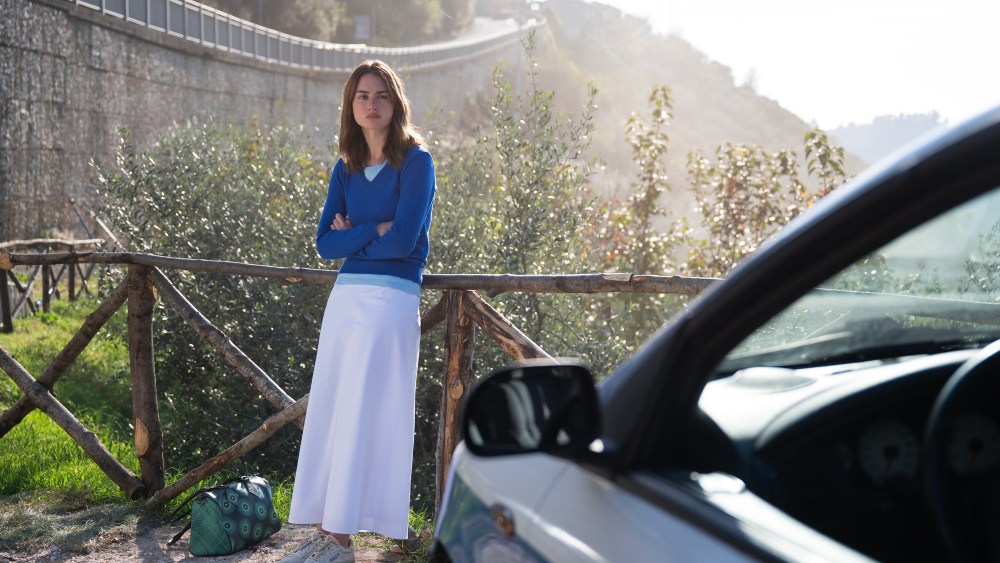The media fixture Amanda Knox — who was accused, convicted and exonerated of murdering her roommate Meredith Kercher while both women were studying abroad in Perugia, Italy, in fall 2007 — has lived through a litany of injustices. She was coerced into a confession by Italian police, who interrogated her for hours in a language she didn’t speak with fluency. She was strong-armed into implicating her employer in the crime, then prosecuted for slandering him. She was falsely told she had tested positive for HIV, a lie used to manipulate the then-college student into disclosing her past sexual partners to investigators and, inevitably, the press.
But according to “The Twisted Tale of Amanda Knox,” an eight-episode Hulu series in which Knox herself was heavily involved as an executive producer, the greatest injustice of all lies in how a young woman’s story was taken from and defined for her at such a young age. Branded “Foxy Knoxy” and hounded by tabloids during her initial trial, Knox has since had several chances to tell her side of the story. She’s written two memoirs — “Waiting to Be Heard,” published a few years after her release on appeal, and “Free,” which debuted this year — and participated in a 2016 documentary, now streaming on Netflix. “The Twisted Tale of Amanda Knox” synthesizes these prior accounts, adding flashes of surrealism and an affecting performance by Grace Van Patten to set itself apart. The series effectively induces outrage on Knox’s behalf, but given how picked over the facts of her case have been, it becomes altogether more interesting after her initial conviction. Some parts of this tale are thornier, and lesser known, than others.
Creator K.J. Steinberg (“This Is Us”) begins with a preview of this eventual turn, depicting Knox’s return to Italy to meet with her onetime prosecutor Giuliano Mignini (Francesco Acquaroli) side by side with her heady early days in Umbria. (Knox and Mignini’s reunion struck me as so implausible I assumed it was an invented device. It’s not; Knox chronicled the experience in “Free.”) But after the first episode, these two timelines converge into a single linear account of how Knox and Raffaele Sollecito (Giuseppe de Domenico), her boyfriend of just a week, were entrapped into taking the fall for Kercher’s killing — even after Perugia local Rudy Guede was linked to the crime through much stronger DNA evidence and convicted in a separate trial.
“The Twisted Tale of Amanda Knox” slows the pace to demonstrate exactly how Knox and Sollecito’s situation deteriorated, step by fateful step. The series shot partly on location, and producing director Michael Uppendahl (“Mad Men,” “Fargo”) works with the cinematography team to conjure the romantic, golden-lit Italy of Americans’ escapist daydreams before it all goes awry. Scripts stick to real-life beats that come off stranger than fiction, like the police insisting Knox texting her boss “see you later” meant they had specific plans to meet the night of the murder because the phrase has different connotations in Italian and English.
To push the story past mere reenactment, the show adds fantasy interludes inspired by “Amélie,” the movie Knox and Sollecito watched at his apartment the night of the murder. A juror pops off an ear while Van Patten’s voice-over explains the Italian legal system; a letter Knox sends Mignini glows like the briefcase in “Pulp Fiction.” These bits never stop feeling abrupt or out of place, even if their purpose — to dramatize Knox’s naivete and alleviate the grimness of the verdict we all know is coming — is clear enough.
More effective in this regard is Van Patten, who took over the role from Margaret Qualley and delivers work that’s both technically impressive (she speaks a lot of Italian!) and dynamic, evolving Knox over a 15-year span from a carefree and careless kid to a hardened adult to a mother and advocate working toward forgiveness. Not all the casting works out so well; Sharon Horgan, so excellent in her own productions, struggles mightily with an American accent as Knox’s mother. But in the titular role, the only mark against Van Patten is that she’s almost too sympathetic — we don’t quite get the personal idiosyncrasy the media seized on in its efforts to malign her, as if a strange affect were somehow evidence of guilt. The “Tell Me Lies” star, whose own sister Anna plays Amanda’s sister Deanna, otherwise acquits herself well. Pun somewhat intended.
Only after Knox and Sollecito are found guilty, a decision that would be reversed on appeal a couple years later, does “The Twisted Tale of Amanda Knox” wade into more nuanced territory than a girl done grievously wrong. Knox’s return to America doesn’t release her from the prison of public perception, and her work with organizations like The Innocence Center highlights how those who share her plight but aren’t pretty, white and middle class don’t get the attention she did, which came with offers of help along with harassment. (They certainly don’t get television shows about their life.) I wish these aspects of Knox’s journey had gotten more space, precisely because they’re less easy to learn about elsewhere. Her marriage, for example, happens in the blink of an eye; what was it like for her to form a meaningful partnership amid all that baggage?
“The Twisted Tale of Amanda Knox” offers some structural counterweights to Knox’s own narrative. One episode focuses on Sollecito’s plight, equal to yet overshadowed by his ex-girlfriend’s; Mignini, a devout Catholic who lost his father at an early age, is developed beyond a cartoon villain. But this is, and can ultimately only be, Knox’s show, with all the limitations that implies. It says as much in the name.
The first two episodes of “The Twisted Tale of Amanda Knox” are now streaming on Hulu, which remaining episodes airing weekly on Wednesdays.

